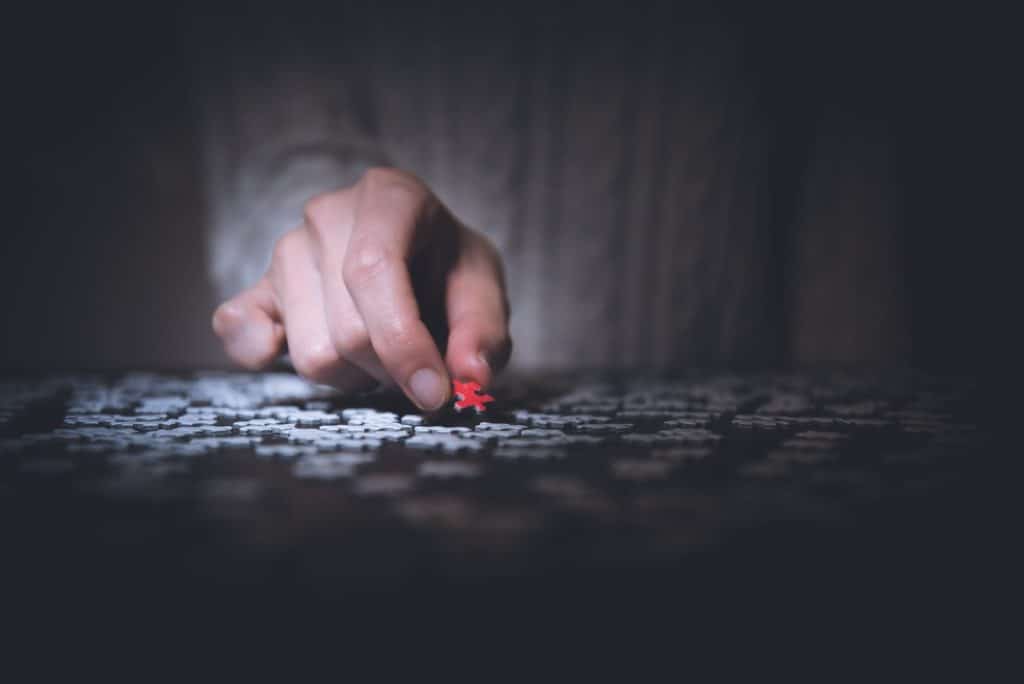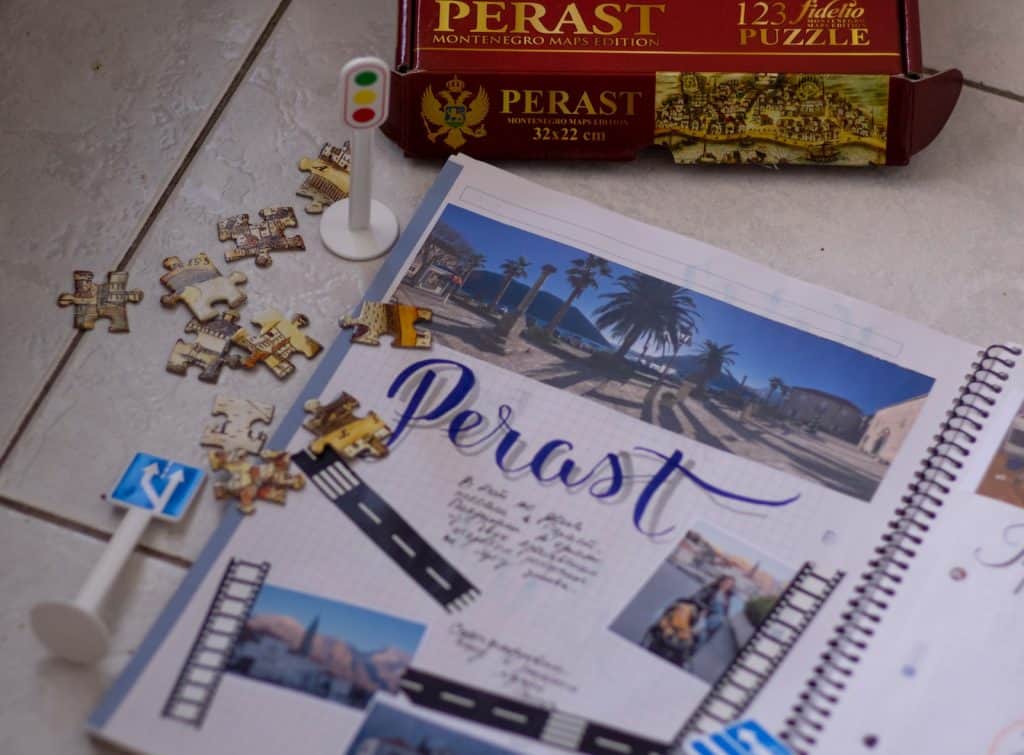How do you reduce glare on a jigsaw puzzle? There are a few different ways to reduce the glare on a jigsaw puzzle, depending on the severity of the problem. If you just have a small amount of glare, you can try moving the puzzle around or adjusting the lighting in the room. If you have a more serious issue with glare, you can try using anti-glare spray or sheets. In this blog post, we’ll discuss the different techniques for reducing glare on a jigsaw puzzle.
How to reduce the amount of glare on a jigsaw puzzle?
These products can help to reduce the amount of light that is reflected off the surface of the puzzle, making it easier to see and work on.

Use a piece of cardboard or poster board to cut out a circle that’s slightly smaller than the puzzle
Have you ever opened up a jigsaw puzzle box and been almost blinded by the glare of the light reflecting off of it? This can make completing the puzzle even more difficult. A simple and creative fix for this issue is to use a piece of cardboard or poster board to cut out a circle that’s slightly smaller than the puzzle. Place the circle so it fits between your head or lamp and the puzzle. The cardboard or poster board will act as a shield, reducing any glare that is impacting your ability to complete the puzzle. This will allow you to focus on completing every detail without distraction from harsh lighting. So next time you come across an overly reflective jigsaw, just pull out some cardboard or poster board – problem solved!
Place the cardboard over the puzzle and trace around it with a pencil
Solving jigsaw puzzles can be an enjoyable, yet frustrating activity. One of the most difficult parts is dealing with annoying glare bouncing off the surface of the puzzle pieces. Fortunately, there’s an easy way to reduce glare and make your puzzling experience more pleasant. All you need is a piece of cardboard that’s slightly bigger than your jigsaw puzzle. Then, simply place the cardboard over the puzzle and trace around it with a pencil. By lifting up the cardboard when done tracing, you will have created a frame that will keep any natural light away from the puzzle surface and drastically reduce any glare you may have encountered before! So if you want to tackle that jigsaw without worrying about pesky reflections, be sure to give this technique a try!
Cut out the circle you just traced – this will be your “lid”
Cutting out a lid for your jigsaw puzzle is an important step in reducing glare, especially when working with a glossy surface. Subsequently, you will want to make sure the lid fits snugly around the edges of your puzzle and covers the entire playing area. Once completed, place the lid onto the puzzle surface and marvel at how much less intense the glare is! Not only will this solution help to reduce eye strain during long hours of puzzling, but it also gives you more freedom to enjoy tending to your masterpiece without interruption. Knowing that you’ve taken a proactive approach to protect yourself from possible discomfort can make all the difference in a successful jigsaw journey!
Put the lid on top of the puzzle when you’re not working on it, to keep dust and light from getting in
One way to effectively reduce the glare or reflection on a jigsaw puzzle when you’re working on it is to put the lid on top of the puzzle when you’re not actively working on it. This can help to keep dust and light from getting in and engaging with those pieces of the puzzle, shining back unwanted reflections. By utilizing this simple trick your jigsaw experience can be far more enjoyable since you won’t have to fight against these distractions! Furthermore, this will also help preserve the integrity of your puzzle over time, since minimizing external elements that contact your work helps reduce wear and tear caused by unwanted particles.
If you’re still having trouble with glare, try doing the puzzle in a different room with softer lighting
For those of us who prefer to work on our jigsaw puzzles in a single, designated area – i.e., not take it on the go like a crossword puzzle or a book – suddenly switching rooms may not be an option. Glare and other forms of distracting light can really interfere with our focus and enjoyment, making it difficult to create that satisfyingly completed puzzle at the end. But if you’re still having trouble with glare despite trying all your usual solutions, consider changing up the room where you work: Switching to a space with somewhat softer lighting can make a world of difference without having to completely overhaul your puzzle setup ritual!
How to have the proper lighting for your puzzle?

Let’s face it: Glare can ruin the whole jigsaw experience. And while there are a variety of ways to combat this issue, one of the most reliable and effective is proper lighting. Here are some tips on how you can utilize light in order to make the most of your puzzling endeavors:
• Adjust the lighting in the room. Having too much direct light can cause a lot of glare on your puzzle, so try to find a balance between having light and avoiding it.
• Utilize ambient lighting. Place lamps or LED lights around the perimeter of your workspace – not just behind you – in order to provide even illumination across the table.
• Try a dimmer switch. This is especially helpful if you have artificial lighting in the room, as it allows you to adjust the light level according to your needs.
• Use natural light, but take care not to overdo it. If possible, utilize natural light from outside the window – just make sure that it’s not too bright for your puzzle.
Types of lamps that work best for puzzles
Along with the tips listed above, it’s also important to consider the type of lamp you use when working on your jigsaw. Here are some great options for lighting up your puzzle and providing the perfect level of visibility – no matter where you choose to work:

• Floor lamps: These can help add a warmer and more inviting touch to your puzzle space. A floor lamp can also be easily adjusted to direct light exactly where you need it.
• Desk lamps: This kind of lamp is adjustable, making it a great choice for those who often move their puzzle around or adjust their lighting needs frequently.
• Track lighting: If you have a lot of pieces and want to spread the light out evenly over your jigsaw, a track light is the way to go.
• Task lamps: These are perfect for those who like to work in one specific area, as they provide focused light on a particular spot.
• Spotlights: If you need a bit of extra illumination, these can be great options – just make sure not to direct them right at the puzzle.
• LED strip lights: One of the most affordable and convenient lighting options, LED strip lights can be used to light up your entire workspace without compromising on brightness.
Having a proper lighting source is essential in order to truly enjoy a jigsaw puzzle and get the most out of it.
Additional tips

Finally, here are a few additional tips to keep in mind when it comes to lighting up your jigsaw puzzle workspace:
• Consider the color of the pieces. If some of your pieces have bright colors or patterns, try to avoid harsh light sources that may make them difficult to see.
• Place lamps at different angles for an even spread of light.
• Utilize natural light during the day, and switch to artificial lighting at night.
• Make sure that your puzzles are illuminated evenly – no dark spots or harsh shadows!
• Don’t forget to use a dimmer switch if you have one available. This will allow you to adjust the brightness according to your needs.
• For the most optimal illumination, point your desk lamp parallel to the table or up towards the ceiling if someone is seated across from it.
• When it comes to taller floor lamps, switch your lamp shades to those that point upwards. This specific design for a shade reflects the light out and up which gives off an indirect light that can still be brilliant enough to showcase your masterpiece!
Conclusion: How do you reduce glare on a jigsaw puzzle?
Glare on a jigsaw puzzle can be minimized by adjusting the lighting in the room, utilizing ambient lighting, using a dimmer switch, and making use of natural light. Additionally, by choosing lamps that are adjustable or designed specifically for puzzles, such as floor lamps, desk lamps, track lighting, and task lamps, it’s possible to reduce glare and create the perfect level of visibility for your puzzle.
Furthermore, using LED strip lights or spotlights can provide extra illumination without adding too much brightness to the room. Lastly, be sure to take into account the color of your pieces and adjust the brightness accordingly. With these tips in mind, you’ll be able to reduce glare and get the most out of your jigsaw puzzle.
For more articles:
- Organising a Large Puzzle Section so it doesn’t take over your house!
- How to Glue a Wooden Puzzle Together
